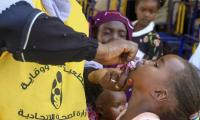Rising Russian casualties and heavy financial losses caused by Ukraine indicate that Putin’s Russia has not learnt anything from the history of the Soviet Union.
According to some conservative estimates, more than 50,000 Russian soldiers have been killed in the conflict. This is believed to be in addition to over 22,000 mercenaries that Russia sent to the killing fields of Ukraine to boost its military position.
There are conflicting claims about the number of Russians that may have died in the conflict, with Ukrainian sources asserting that as of April 26, more than 463,930 personnel of the Russian army have died while over 1,391,790 are injured. The assessment of Ukrainian forces also asserts that Russia lost 13,972 armoured combat, 7,269 tanks, 11,898 artillery, 348 aircraft, 325 helicopters and 26 ships and boats.
It is not only Ukrainian sources that have come up with a higher death toll, but some other Western sources have also claimed higher fatalities. For instance, a declassified US intelligence document reportedly claimed last year in December that the Ukraine war cost Russia 315,000 dead and injured troops, or nearly 90 per cent of the personnel. The document asserted that Russia began its full-scale invasion of Ukraine in February 2022 with 360,000 personnel, claiming about 87 per cent of the total with which it started the war were either killed or wounded.
Some Western sources estimate the death toll to be even higher. Last month, the UK’s Ministry of Defence revealed that more than 355,000 Russian personnel were killed and wounded in the Ukraine war. The ministry estimated that the average daily number of Russian casualties throughout February was the highest since the start of the invasion. It put the figure at 983 casualties per day.
Russia dismisses these numbers as highly exaggerated. Moscow believes that Western sources underestimate Ukrainian losses, but speculations will continue to fuel unless the Russian defence ministry itself comes up with the exact figure. The recent figure of over 50,000 deaths was revealed by the BBC, which claims that the death toll of the second year of the war was nearly 25 per cent higher than the first yearof the war.
The British broadcaster says that BBC Russian, independent media group Mediazona, and volunteers have been counting deaths since February 2022. The report claims that new graves in cemeteries have helped provide the names of many soldiers. “Our teams also combed through open-source information from official reports, newspapers and social media. More than 27,300 Russian soldiers died in the second year of combat – according to our findings – a reflection of how territorial gains have come at a huge human cost.” The Russian government, however, keeps evading questions regarding the exact death toll.
It is not clear what the exact death toll is but what is clear is the imprudence of the Russian ruling elite, which has not learnt anything from the history of Soviet military interventions and their burden on the country’s economy. The plan to teach a lesson to Ukraine seems to have boomeranged on Russian policymakers. Their dream of quick victory had evaporated within a few weeks of the invasion, but they were unable to discern it.
Now, they are bogged down in the quagmire of this bloody conflict that has already decimated more than 31,000 Ukrainians, besides forcing more than 6.5 million to flee the country and rendering 3.7 million internally displaced. The war-torn country now has 14.6 million people who need humanitarian assistance.
It is difficult to understand why the Russian elite did not anticipate strong support from the West for Ukraine. The West has extended generous financial and moral assistance to Ukraine, diluting the chance of Russian victory. Since January 2022, Ukraine has received about $278 billion in aid, including $75 billion from the US. It is perhaps because of this generous assistance that Ukraine can put up stiff resistance. Despite all human and financial losses, the people of the war-torn country have managed to recapture 54 per cent of the occupied territory, leaving Moscow in control of only 18 per cent of those territories.
While the suffering of Ukrainians is quite visible, in the long run Russians will not be immune to hardships and difficulties. The signs of such difficulties are already quite visible. According to a report by Rand Corporation, as of September 2022, the direct Russian military costs of the war might have reached $40 billion, or 84 per cent of the 2021 national defence spending.
“Of this $40 billion, operations and compensation amounted to $29 billion. Material amounted to $11 billion. Direct costs through 2024 are expected to amount to almost $132 billion. For all of 2022, gross domestic product losses amounted to between $81 billion and $104 billion. Russia experienced $322 billion in financial capital destruction in 2022, as measured by the market value of companies on the Moscow Stock Exchange.”
Despite this, the country is forced to spend a significant portion of its budget on military spending and internal security. Last November, Putin gave his official approval to a significant increase in military spending that will see around 30 per cent of fiscal expenditure directed towards the armed forces during the current year. This is not the first year where military spending is high, but it has been going on for some years now.
For instance, an analysis of the 2022 public budget of Russia shows that the country spent 50 per cent more on ‘security’ (which includes military activity), while Moscow slashed spending on matters related to the welfare of ordinary Russians. For instance, health spending was cut by 9.0 per cent, education 2.0 per cent and infrastructure 24.0 per cent.
Despite being part of the Soviet ruling elite, Putin does not seem to have learnt much from the demise of the socialist state. From Khrushchev to Mikhail Gorbachev, many Soviet leaders had this realization that the USSR was wasting massive resources on this non-productive sector of the economy besides believing that it was a blunder on the part of Soviet leadership to carry out interventions in various parts of the world and jump into conflicts.
But ignoring this unfortunate history, Putin decided to drag Russia into military tensions, wars and conflicts. He is partly responsible for waging two wars in Chechnya besides using sabre rattling against some former Soviet republics. This has put Russia in the same situation that it found itself in during the cold war. Even today, it is spending more on defence than on human development. Russian consumer goods were not known during Soviet time, and the same seems to be the case now.
No country has witnessed more horrors of war than Russia, which lost more than 27 million people during two world wars. It also faced internal disturbances and civil wars. It was the one triggering the current conflict, at least militarily, in Ukraine. Therefore, it is for Moscow to come up with some saner solution to the Ukrainian conflict that does not involve this insane killing that has been unfolding in the war-torn country. The prolongation of war is affecting not only Ukrainians but also poor people across the world.
Therefore, it is important that Moscow invites neutral countries or credible international or regional forums to step in. It should pave the way for a diplomatic solution to this conflict, which has been playing havoc with the lives of millions in the two countries in one or another form.
The cessation of hostilities would not only pave the way for Ukraine’s reconstruction, but it could also benefit Russians, who might come out of isolation and become an active part of the global community.
The writer is a freelance journalist who can be reached at: egalitarianism444@gmail.com
Critics argue that strategy is vague, but closer look indicates strategic alignment with global trends and national...
To defeat it, we must distrust bot-driven narratives, to defeat it, we must verify sources before believing or sharing
Too often in emerging markets, digital innovation is treated as standalone goal, with risk relegated to afterthought
As in Pakistan lawfare’s impact and prevalence are increasing, situation is turning murkier
Number of traditions are associated with Eid, such as new clothes and giving and receiving of cash gifts as Eidi
Internationally, there have been misleading theories propounded about so-called slowing of Chinese economy







